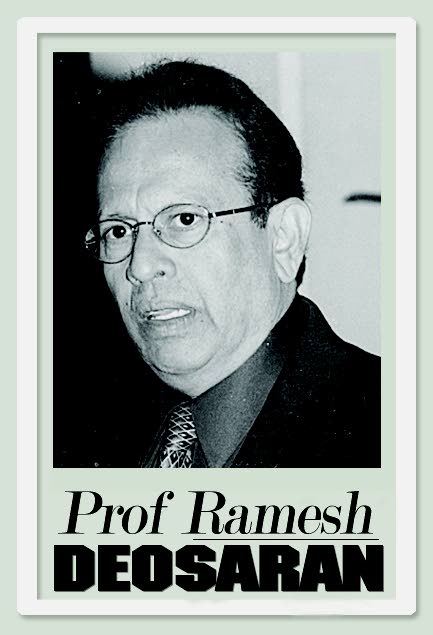Numbers useful, but

Number. This is described as “an arithmetical value representing a particular quantity used in counting and making calculations.” It is commonly said in policy-making “if it is important, measure it.” Count it. But I am not sure this always reveals the reality.
Crime statistics in particular, as I suggest later, deserve caution. Numbers can be masters or servants, for example, with Britain’s Brexit (52 per cent leave vs 48 per cent remain) or Guyana’s no confidence motion (33 yes, 32 no). Such very small differences causing very great upheavals. And there is the late Dr Williams’ “one from ten leaves nought.”
In football, as another example, numbers can even be unjust. A left-wing footballer, Ryan, skilfully dribbled past five opponents, then 15 feet from the goal post, he swerved the ball to his better-positioned colleague, Harry, who merely touched the ball into the net. Good. But the final published score sheet has Harry as the scorer but it was really Ryan whose struggle made it possible. Similarly in cricket.
Imran runs fast, falling, getting up and stretching on the ground to meet the ball for his catch. The crowd roars. However, the record books show Danny the bowler as getting the wicket. As some shrewd observers like my UWI colleague Noel Kallicharan, Noble Phillip or even Kelvin Baldeosingh may say, there are ways to record such phenomenon fairly with numbers. For example, out of 100 per cent for the goal, give Ryan 40 per cent and Harry 60 per cent. And in the case of the cricket example, same thing. But such adjustments, while serving justice, would not be mentally convenient. In fact, the human quest for mental short-cuts is the psychological basis for stereotyping and prejudice.
Take budget numbers. The figures are generally rounded off. Or if you ask a contractor for a project estimate, rather than $251,354 (real cost), he would give you $252,000. Worse with millions. We live lives of approximations, re-shaping reality to suit our mental convenience. In the physical and social sciences, every measure carries “a margin of error,” largely because the instrument is not perfect. The football and cricket examples may seem trivial but they help make the point that while numbers are important, their limitations must be appreciated. No matter how sophisticated the statistics, their validity depend on the integrity of the raw data collected.
I was intrigued by the headline, 61% drop in homicides (Express, Jan 8). Good copy. Of course, all of us I imagine, newspapers too, wish that crime in all forms, especially murder, will decrease this year. Commissioner Gary Griffith promised. So there is a natural anxiety to highlight successes. But when you compare the seven murders in the first week of January to 18 within the same period last year, then splash a “61% drop,” the headlined exaggeration is appreciated but not a reliable index. There are 358 more days. Murders flow without regard to year-to-year analysis.
The report added: “Police project that if 2019’s first seven days are any indication and if police exercises and initiatives can keep the murder toll down, then January has the potential to end with about 31 murders in the first month – about 50 per cent fewer than what was reported last year.” So are we so insensitised, habituated, so as to imply that 31 murders in 31 days are acceptable?
What about saying instead that in 1990, we had around 100 murders while last year the score went over 500? What really is the reference point for assessing the murder rate – increase or decrease? Now I am no killjoy. We do appreciate the effort of Commissioner Griffith and his officers, but we cannot become so complacent by short-memory numbers so as to fall down in giving support to the police. We are in a serious state.
While the arithmetic is of interest what is also really needed is calculus, a deeply systematic examination of each murder (both under investigation and with convictions) – location/residence, background etc of offender and victim, the socio-economic circumstances, patterns of time, place, apparent motives, police operational distance, etc. There is of course much more but all of this to help guide policing and bring a “fit for purpose” approach to the “one shot, one kill” tactic. Help him go beyond the day-to-day numbers for effective, sustainable policy-making.


Comments
"Numbers useful, but"